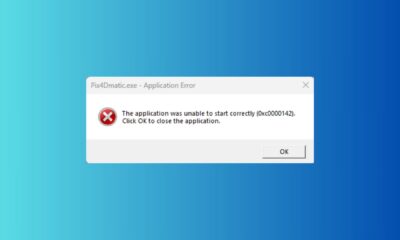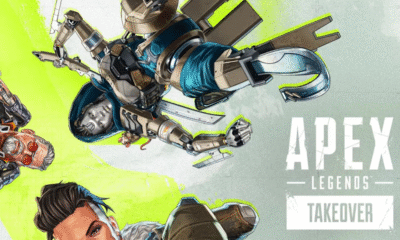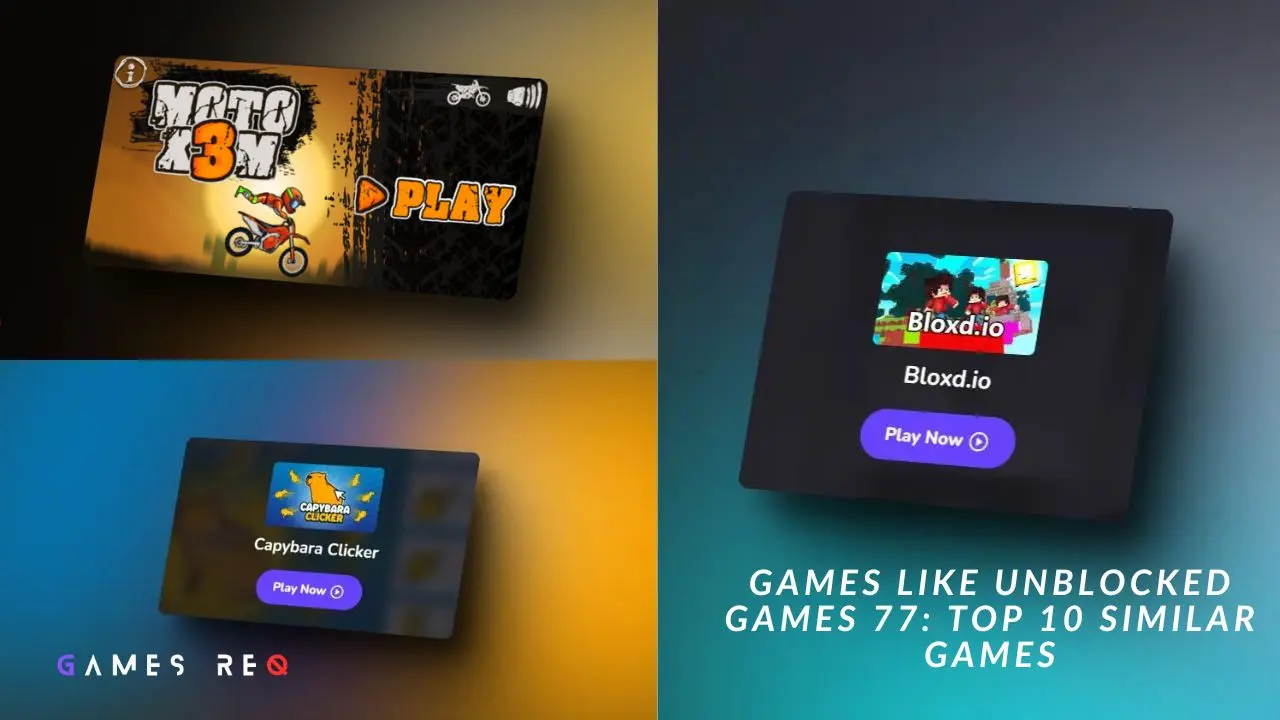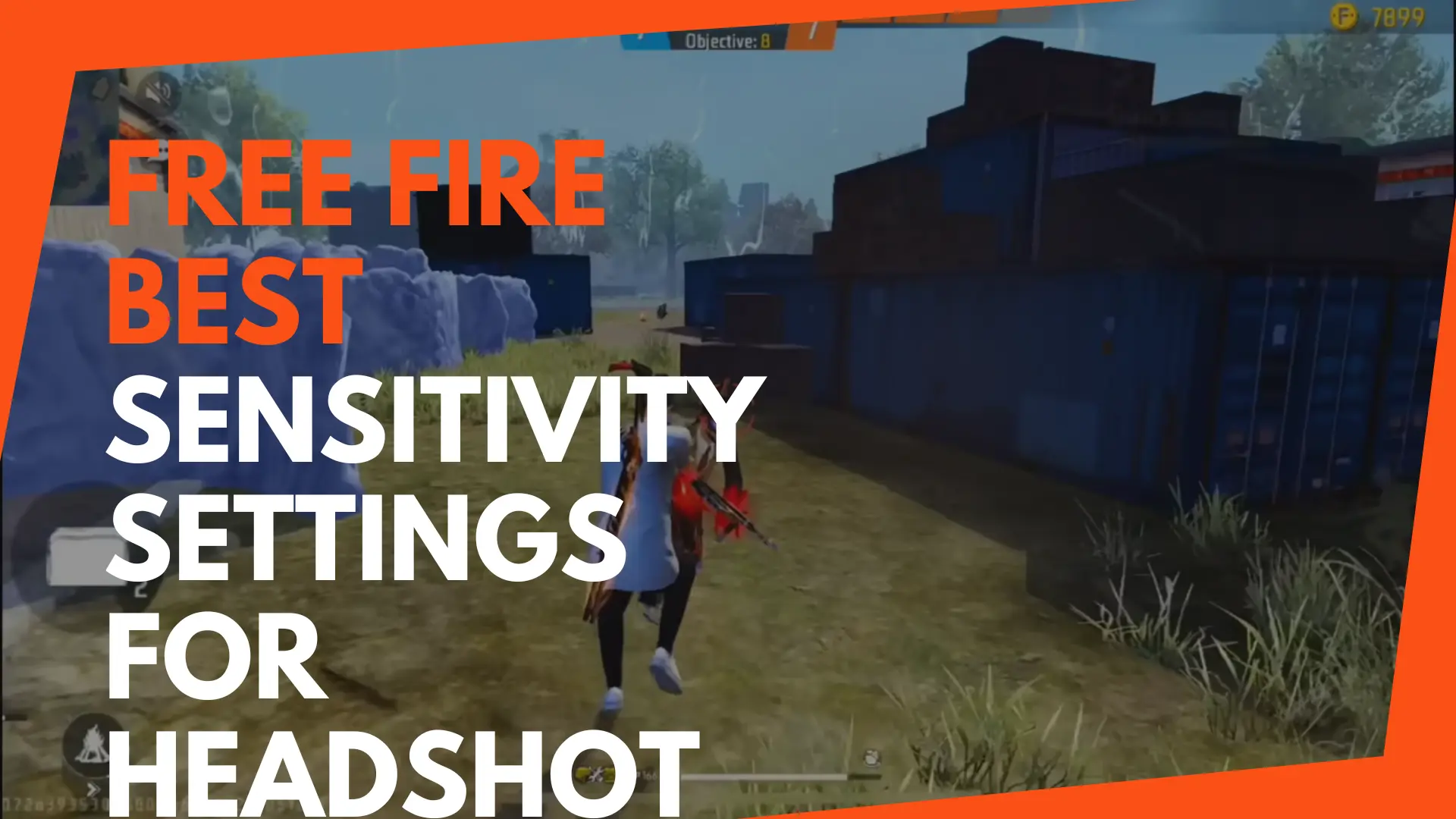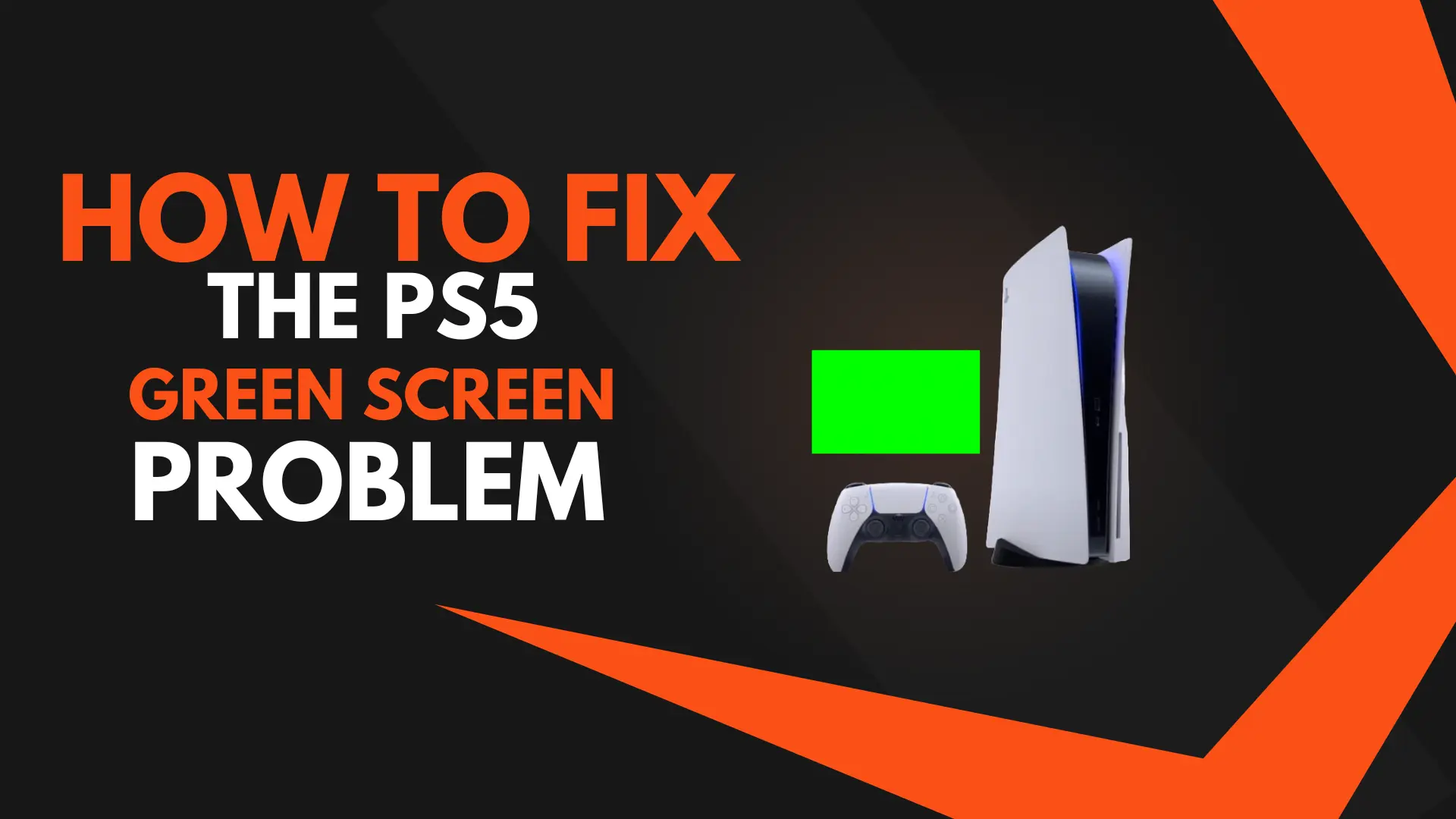System Requirements
Godot System Requirements – GPU, CPU & OS Recommendations
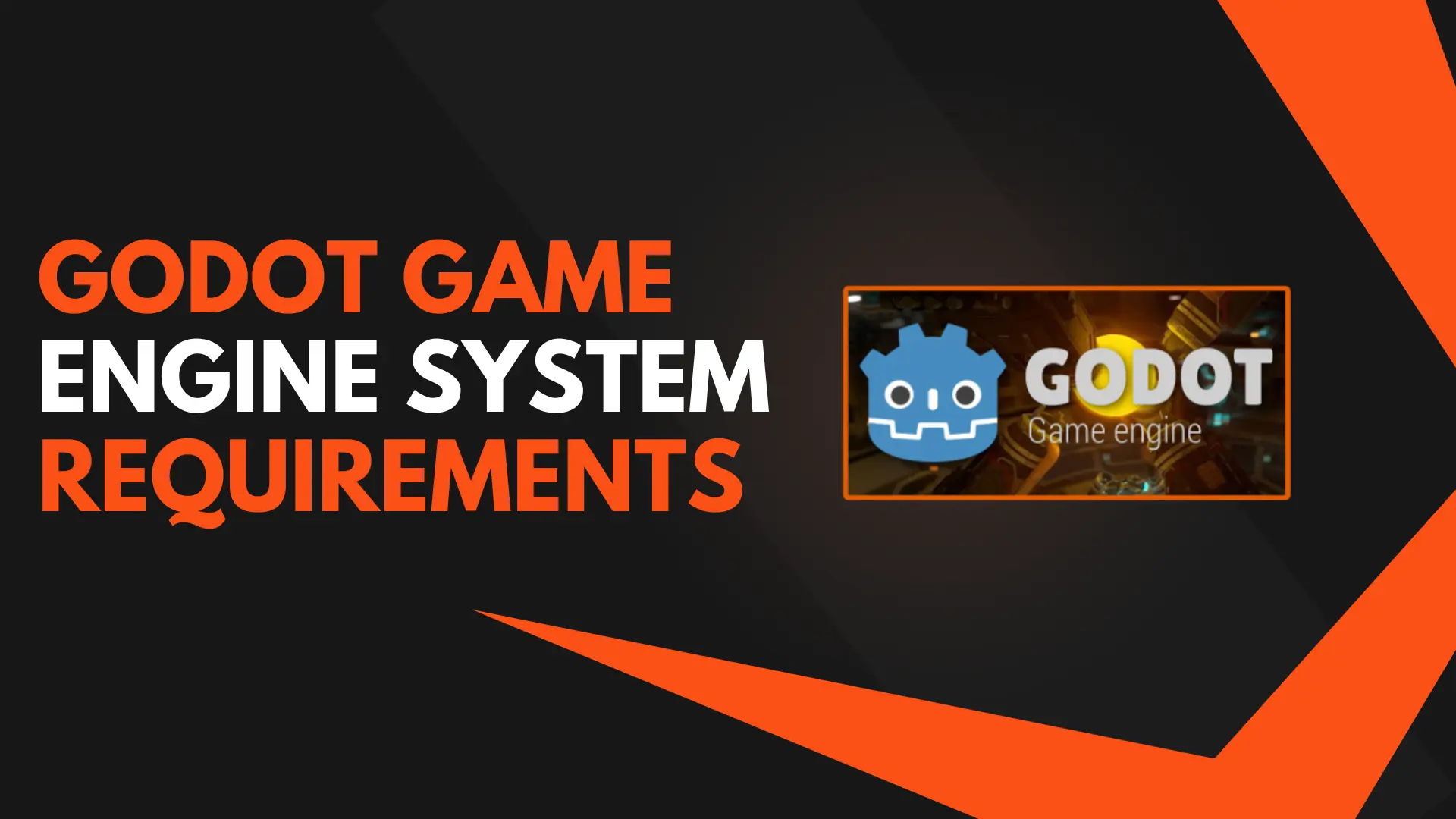
Godot is a popular open source game engine used by indie developers and hobbyists to create 2D and 3D games for multiple platforms. In this post, we’ll look at the latest minimum and recommended system requirements to run Godot on Windows, Mac and Linux. We’ll also go over tips to optimize Godot performance and get better FPS along with discussing Godot’s RTX and multi-threading support.
Introduction
Godot is a free and open source 2D and 3D game engine developed by the Godot Engine community. It allows users to create games and applications that can run on multiple platforms including Windows, macOS, Linux, iOS, Android and web browsers.
Godot is known for its node-based architecture, flexible tools, active community support and ability to export to multiple platforms easily. It uses a custom scripting language called GDScript that is similar to Python. C++, C# and Visual Scripting are also supported.
Some popular games made with Godot include Risk of Rain 2, Duck Game, Atomic Society, Autonauts and Gene Shift.
While Godot can run smoothly even on low end hardware, having a more powerful PC allows you to work with larger projects, complex 3D graphics and higher FPS. So let’s look at the latest official system requirements.
Minimum System Requirements
These are the minimum specs needed to run the Godot editor and create simple 2D and 3D games:
- OS: Windows 7+, Mac OS X 10.12+, Ubuntu 14.04+ or other Linux distro with glibc 2.24+
- Processor: Any modern CPU with SSE2 support
- Memory: 2 GB RAM
- Storage: 200 MB HDD space
- Graphics: Any OpenGL 2.0+ compatible GPU
The minimum requirements are quite modest. Even a 5 year old budget laptop should be able to run the Godot editor and build small 2D or basic 3D games easily.
However, to work comfortably with larger projects you should aim for the recommended specs below.
Recommended System Requirements
Here are the recommended system requirements for smooth Godot development:
- OS: Windows 10 64-bit, macOS 10.14+, Ubuntu 18.04+
- Processor: Modern multi-core CPU e.g. Intel Core i5 or AMD Ryzen 5
- Memory: 8 GB RAM
- Storage: 2 GB free space SSD
- Graphics: OpenGL 3.0+ compatible GPU with 2+ GB VRAM
Some key points:
- An Intel Core i5, Ryzen 5 or equivalent modern multi-core CPU is recommended for complex games.
- 8 GB RAM is strongly suggested for larger projects and to enable multi-threading.
- A discrete GPU with OpenGL 3.0 support and 2+ GB VRAM is ideal for 3D games.
- Using an SSD provides a big boost to overall system responsiveness.
Also make sure you’re on a 64-bit OS as Godot requires a 64-bit system. The latest OS versions are preferred for best performance.
Godot Multi-Threading
Godot provides multi-threading support to better utilize multi-core CPUs. This can significantly improve performance in large scenes with lots of nodes and objects.
Enabling multi-threading allows physics, animation, audio and other subsystems to run on separate CPU cores. This prevents one task from blocking others.
To enable multi-threading in Godot:
- Go to Project Settings -> Debug -> Settings
- Turn on the “Use Multi-Threading” option.
Just keep in mind that multi-threading can increase complexity for debugging. Save it for when you really need the performance benefits in big projects.
Having a modern multi-core CPU is recommended to benefit from Godot’s multi-threading capabilities. An Intel i5 or Ryzen 5 CPU with 4 or more cores enables good scaling across threads.
Godot RTX and Ray Tracing Support
Godot has preliminary support for Nvidia RTX ray tracing through the work of third party module developers. This includes basic integration of DXR ray tracing, Nvidia OptiX denoising and other RTX features.
However, RTX support in Godot is still in early development and not officially built into the main engine yet. It may require custom modules and C++ coding to implement for your project.
If you want to use RTX ray tracing in Godot, having an Nvidia RTX 2060 or higher GPU is recommended due to the heavy computational requirements of real-time ray tracing.
For most users, traditional rasterization rendering is still the norm in Godot. But the engine is slowly adding more ray tracing capabilities over time.
Tips to Optimize Godot Performance
Here are some quick tips to get better FPS and smoother gameplay when developing games in Godot:
- Make use of Godot’s Multi-Threading as mentioned earlier. This greatly improves FPS when there are a lot of nodes and physics calculations.
- Reduce draw calls by using texture atlases and meshes instead of individual sprites. Draw calls slow down rendering.
- For 3D, use occlusion culling, LODs and viewports wisely to minimize objects drawn per frame.
- Avoid overusing particles, fragment shaders and dynamic lights as they add to GPU load.
- Use GPU profiling in Godot to identify bottlenecks when optimizing graphics.
- Turn on GDScript function typing for faster script execution. Keep code optimized.
- For mobile games, use Godot’s mobile export templates with appropriate options.
With some optimization work, Godot can run 2D and simple 3D games smoothly even on low end hardware. More particles, physics and richer graphics will require a mid-range or better GPU.
Best GPUs for Godot Game Development
These are some of the best graphics cards to use with Godot for game development:
- Budget: Nvidia GTX 1050 or AMD RX 560 – Entry-level cards good for 2D & basic 3D.
- Mid Range: Nvidia GTX 1060 or AMD RX 580 – Excellent balance of price and performance. Can handle most Godot games.
- High-end: Nvidia RTX 2070 Super or AMD Radeon VII – Great for advanced 3D games and content creation at 1440p or 4K resolution.
- RTX Options: Nvidia RTX 2060 or higher – Required for ray tracing features but expensive. Fine for rasterization too.
On the budget end, opt for cards like the GTX 1050 Ti or RX 560 which offer a balance of affordability and OpenGL 4.5 support.
Mid-range cards like GTX 1060/1070 or RX 580/590 are the sweet spot for smooth Godot development. Avoid older GPUs limited to OpenGL 3 or less.
Higher-end RTX or Vega cards provide extra power especially for 3D games but have a premium cost. Only needed if targeting 4K resolution or ray tracing.
Best CPUs for Godot Game Development
Recommended CPUs for Godot include:
- Budget: AMD Ryzen 3 3100 or Intel i3-10100 – Good for most 2D games.
- Mid-Range: AMD Ryzen 5 3600 or Intel i5-10400 – The sweet spot for most Godot users. Great multi-threaded performance.
- High-End: AMD Ryzen 7 5800X or Intel i7-10700K – Best for complex 3D games and rapid content creation.
Newer AMD Ryzen or Intel Core CPUs generally provide the best mix of good single thread and multi-thread performance. They offer better efficiency compared to older generations.
Quad-core CPUs are suitable for smaller 2D projects. Hexa or octa-core CPUs like the Ryzen 5 3600 are recommended for most 3D games to enable proper multi-threading in Godot.
High end chips like the Ryzen 9 3900X or Core i9-9900K offer the ultimate performance if you can spend the premium. But often not worth the extra cost over a mid-range Ryzen 5 or Core i5 CPU for most indie games.
Godot Version History
Godot has been under development since 2014 with regular stable releases every few months. Here’s a quick history of major Godot versions so far:
- 1.0 – Released in December 2014. Initial stable release supporting Windows, Mac, Linux and web platforms.
- 2.0 – Released in January 2017. Redesigned UI, 3D support, C# scripting, animation tools and more.
- 2.1 – Released in March 2018. Mobile support, visual shader editing, C# debugging and performance improvements.
- 3.0 – Released in January 2019. Vulkan support, rendering and lighting upgrades, C# usability improvements.
- 3.1 – Released in February 2020. Fully rewrite of rendering backend, WebAssembly and WebGPU support, GDScript improvements.
- 3.2 – Released in December 2020. Further graphics enhancements, C# hot reloading, new physics engine.
- 3.3 – Released in September 2021. Visual scripting, texture array support, particle and navigation mesh improvements.
The latest stable release as of October 2022 is Godot 3.5 “Eldair” with a revamped audio engine, render pipeline upgrades and C# support improvements. Godot 4.0 alpha is also now available with Vulkan rendering, physically based rendering and a new visual scripting system.
Overall, Godot has grown enormously in capabilities and maturity over the past few years while retaining its free, open source nature.
Godot Platforms and Mobile Support
Godot supports exporting games to desktop (Windows, Mac, Linux), mobile (iOS, Android) and web (HTML5) platforms.
Official export templates make it easy to build your game for different platforms from the same codebase. Optimization and customization options are available per platform.
Godot’s mobile support is quite good including features like touch input, device tilt, native UIs, software rendering and light baking. Simple 2D games can run smoothly on most phones.
3D performance on mobile depends heavily on optimization work. You may need to reduce texture sizes, use static batches, bake lighting, etc. Test on actual devices regularly to profile bottlenecks.
Overall, Godot provides a great range of deployment options for indie developers on a budget. You can build your game on desktop then export to almost any major platform easily.
Godot Review Roundup
Here’s a quick look at some positive general reviews of the Godot game engine from popular sites:
- PC Gamer – “The best free game engine in 2019 for hobbyists, with an interface that’s simple to use and increasingly powerful tools.
- GameDev.net – “A strong engine with a powerful rendering system, flexible C#-powered tools, and a friendly workflow for beginners and experts alike.”
- IndieDB – “Godot offers an unbeatable package of 2D and 3D tools, export power, multi-platform support and customization options in an elegant open source setup.”
- MakeUseOf – “Don’t be fooled by the unassuming interface, Godot packs a serious punch when it comes to 2D game development and offers great value with a thriving community.
- Hacker Noon – “For indie and hobbyist game developers, Godot provides an advanced toolset and huge export abilities without the monetary hurdles posed by commercial engines.”
Overall most reviews praise Godot’s open source model, rich feature set, active community, detailed documentation and rapid cross-platform publishing abilities. It’s a great choice for entry level to mid-range 2D and 3D indie game development.
Alternative Similar Games
If you do not have the minimum system requirements to comfortably run Godot-based games, here are 10 similar lightweight games you can play:
- Undertale
- Stardew Valley
- Terraria
- Hollow Knight
- Papers, Please
- Hyper Light Drifter
- Mini Metro
- Limbo
- FTL: Faster Than Light
- Hotline Miami
These games have relatively modest system requirements, often only needing an integrated GPU and basic CPU to run smoothly. They offer engaging 2D pixel art and gameplay without demanding high-end hardware. Many are acclaimed indie titles that can provide hours of entertainment.”
Godot FAQs
Here are some frequently asked questions about Godot:
What coding languages can be used with Godot?
Godot primarily uses its own scripting language called GDScript that is similar to Python. It also supports Visual Scripting, C#, C++ and gdscript for scripting behavior.
What 3D modeling programs work with Godot?
Godot supports importing 3D models and animations from various popular programs like Blender, Maya, 3ds Max, Cinema 4D and more.
Can Godot games be published on Steam?
Yes, Godot games can be published on Steam using the Steamworks SDK just like any other game engine. Popular Godot games like The Interactive Adventures of Dog Mendonça & Pizza Boy are on Steam.
Does Godot work for 2D or 3D games?
Godot works very well for both 2D and 3D game development, with lots of built-in tools for sprites, tiles, physics, particles, lighting, shaders and more.
Is Godot completely free to use?
Yes, Godot is free and open source without any royalty or licensing fees. Users have complete access to all engine features and source code under the MIT license.
Conclusion
Overall, Godot provides an excellent free and open source game engine option for indie developers. It can handle both 2D and 3D games using a variety of scripting approaches and rich built-in tooling.
The minimum requirements are quite modest but a modern multi-core CPU and mid-range GPU is recommended for smooth development. Godot’s multi-threading support also benefits greatly from recent CPUs.
With its ease of use, detailed documentation, cross-platform export abilities and powerful rendering, Godot delivers immense value. The active user community ensures plentiful tutorials and support resources online.
Hopefully this guide gave you a good idea of the system requirements and performance optimization tips for Godot game development. Let us know if you have any other questions!
Can I Run
Can I Run Warface on Intel Core i5-4570 with Integrated Graphics HD 4600?

Yes You can Run Warface. The i5-4570 uses Intel HD Graphics 4600, which is an integrated graphics processor built into the CPU.
Warface is a fairly demanding online first-person shooter game that requires a dedicated graphics card with its own video RAM to run well, especially at higher settings.
While you may be able to launch and play Warface on the i5-4570’s integrated graphics, the performance will likely be very poor with low frame rates and visual quality. Integrated graphics are generally not designed for 3D gaming.
To get a good experience playing Warface, you would need a system with a discrete graphics card from Nvidia or AMD, preferably a mid-range or higher GPU from the last few years. The CPU requirements for Warface are relatively modest, so the i5-4570 CPU itself could potentially handle the game if paired with a proper dedicated graphics card.
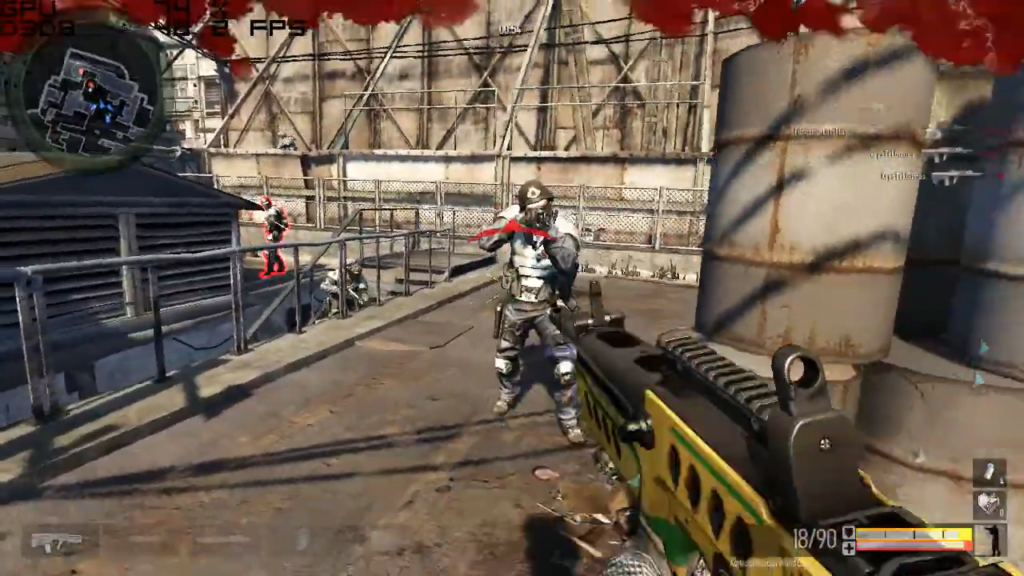
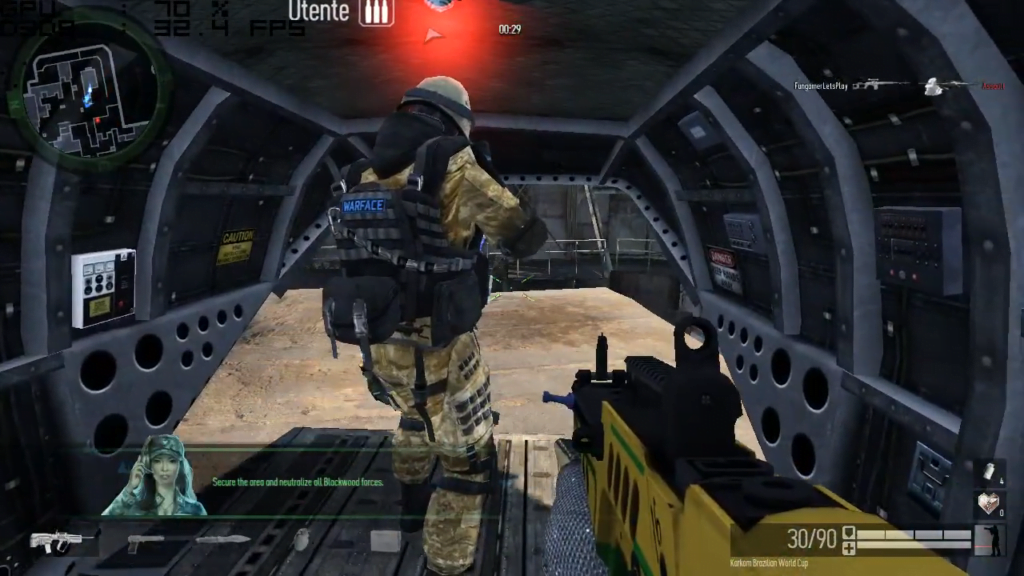
Best Setting For Warface
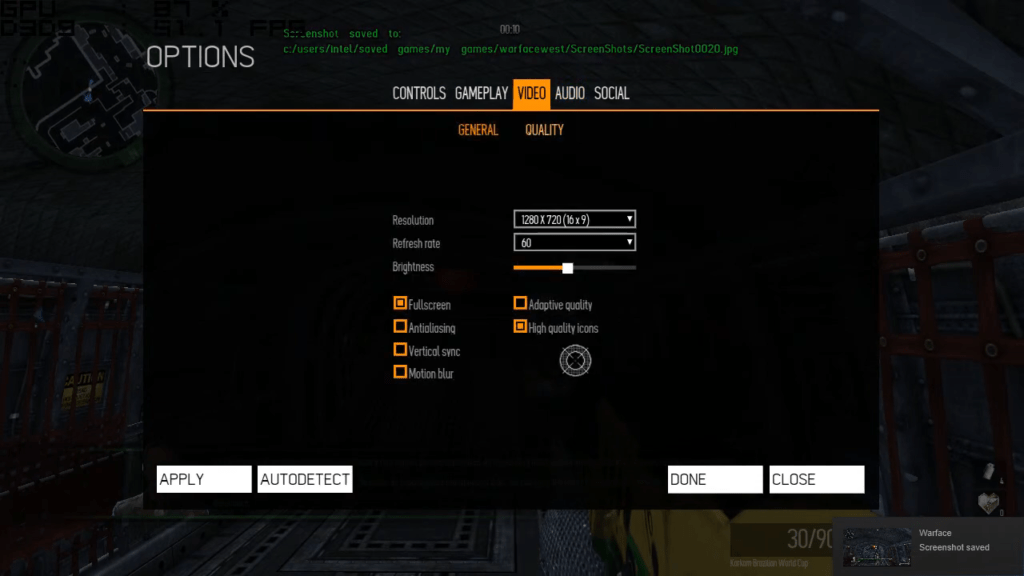
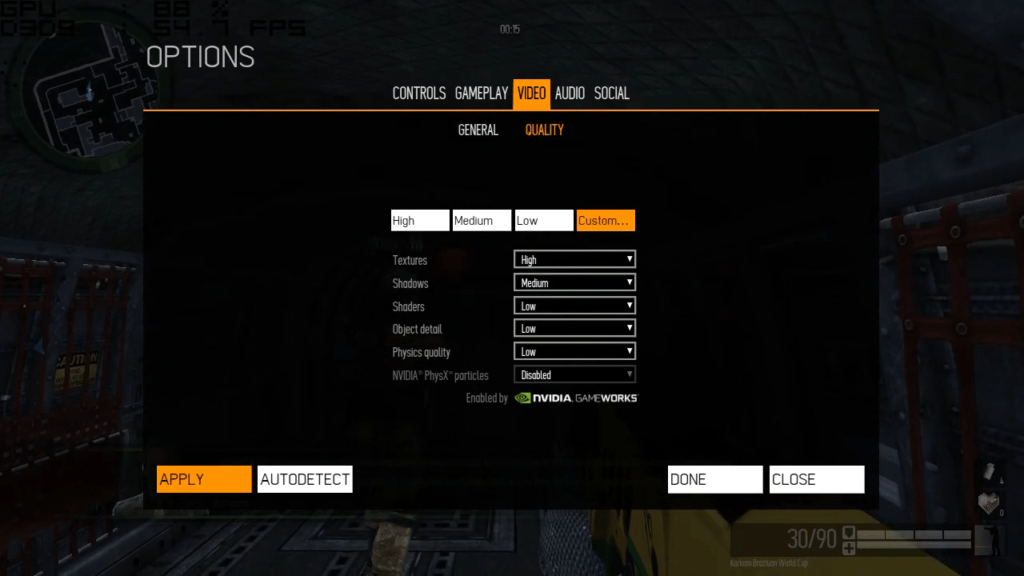
But with just the integrated HD 4600 graphics, I would not recommend attempting to run a demanding shooter like Warface, as the visuals and gameplay will suffer severely. A dedicated GPU is really required.
System Requirements
RoboCop: Rogue City System Requirements
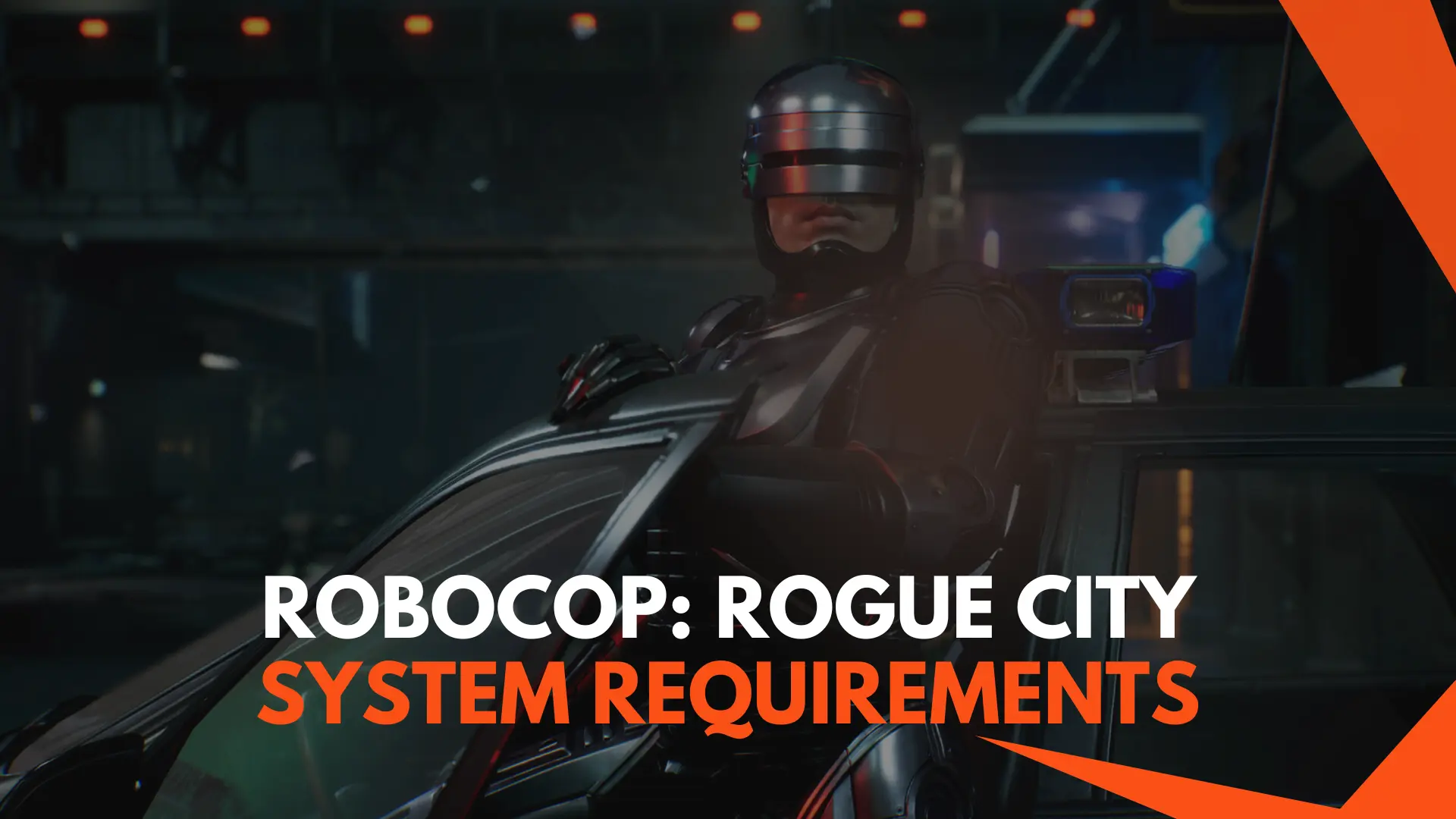
RoboCop: Rogue City Requirements:
Minimum:
- Operating System: Windows 10 64-bit (latest update)
- Processor: Intel Core i7-4790 (4.00 GHz) or AMD Ryzen 5 2600 (3.4 GHz) or equivalent
- Memory: 16 GB RAM
- Graphics Card: Intel Arc A380 (4GB VRAM) or NVIDIA GeForce GTX 1650 (4GB VRAM) or AMD Radeon RX 480 (4GB VRAM)
- Storage: 51 GB available space
- Additional Notes:
- Requires a DirectX 12 compatible graphics card.
- Broadband internet connection recommended.
Recommended:
- Operating System: Windows 10 64-bit (latest update)
- Processor: Intel Core i7-10700K (3.80 GHz) or AMD Ryzen 7 3800XT (3.90 GHz) or equivalent
- Memory: 16 GB RAM
- Graphics Card: Intel Arc A770 (8GB VRAM) or NVIDIA GeForce RTX 3070 (8GB VRAM) or AMD Radeon RX 6800 (16GB VRAM)
- Storage: 51 GB available space
- Additional Notes:
- Requires a DirectX 12 compatible graphics card.
- SSD storage recommended for improved performance.
- Broadband internet connection recommended.
System Requirements
Recommended Graphics Card For Cyberpunk 2077

Cyberpunk 2077 is one of the most demanding games on the market right now. To enjoy it in all its ray tracing and DLSS glory, you’ll need a powerful graphics card. But which GPU should you get for Cyberpunk 2077 in 2023? This detailed guide examines the system requirements, graphics settings, and top cards for smooth 60+ FPS performance.
Key Takeaways:
- Cyberpunk 2077 is very GPU intensive, requiring at least a mid-range card for 60 FPS at 1080p.
- For max settings at 1440p, an RTX 3070 or RX 6800 is recommended. RTX 3080 or RX 6900 XT delivers 60+ FPS at 4K.
- 8GB of VRAM is enough for 1080p. 10GB or higher is better for 1440p and 4K.
- NVIDIA GPUs work best thanks to DLSS and more mature ray tracing support.
- AMD RDNA 2 cards offer great value, but lack DLSS. RX 6000 series ray tracing is still in early stages.
- Aim for 60+ FPS at your target resolution to enjoy Cyberpunk 2077 smoothly. Shoot for at least 30 FPS minimum.
Cyberpunk 2077 System Requirements
Cyberpunk 2077 has pretty beefy official system requirements, especially at higher settings:
Minimum Specs (Low Settings, 1080p):
- CPU: Intel Core i5-3570K or AMD FX-8310
- GPU: NVIDIA GeForce GTX 780 3GB or AMD Radeon RX 470
- RAM: 8GB
- Storage: 70 GB HDD (SSD recommended)
Recommended Specs (High Settings, 1080p):
- CPU: Intel Core i7-4790 or AMD Ryzen 3 3200G
- GPU: NVIDIA GeForce GTX 1060 6GB or AMD Radeon RX 590
- RAM: 12GB
- Storage: 70 GB SSD
Ideal Specs (Ultra Settings, 4K):
- CPU: Intel Core i7-6700 or AMD Ryzen 5 3600
- GPU: NVIDIA GeForce RTX 2080S or AMD Radeon RX 5700 XT
- RAM: 16GB
- Storage: 70 GB SSD
As you can see, Cyberpunk 2077 can be quite demanding, especially at higher resolutions and graphics settings. A strong 6GB+ video card is recommended for smooth 60 FPS gameplay. You’ll also want a fast quad core CPU and at least 12GB of RAM.
Graphics Settings Impact on Performance
Cyberpunk 2077 has a ton of graphics options to tweak, with major performance impacts:
- Resolution – The biggest impact. 4K is extremely demanding. 1440p is 35% easier to run than 4K. 1080p is much more playable.
- Ray Tracing – High impact on NVIDIA RTX cards. Lower FPS by 30% or more when enabled. AMD RDNA 2 ray tracing has less impact.
- DLSS – NVIDIA DLSS boosts FPS by up to 60% when enabled. Great way to offset ray tracing costs.
- Image Quality – Lowering quality from Ultra to High improves FPS significantly. Don’t use Ray Tracing on Ultra.
- Post-Processing – Costly settings like Motion Blur and Depth of Field hurt FPS on weaker GPUs. Turn off if needed.
- Shadow Quality – High impact on FPS. Keep on Medium or High for good balance.
- Crowd Density – Lower for noticeable FPS gains. High density taxes your GPU more.
Optimizing these settings based on your GPU will help Cyberpunk run much better. Use lower settings at first, then increase quality as you test performance. DLSS can also help maximize FPS on RTX cards.
Recommended Graphics Cards for Cyberpunk 2077
Now let’s get into the best GPU picks for Cyberpunk 2077 at various budgets and resolutions:
1080p Medium Settings
If you just want to play Cyberpunk 2077 at 1080p resolution and medium quality settings, these affordable graphics cards will work:
- NVIDIA GTX 1060 6GB – Reliable old mid-range card that hits 35-45 FPS on Medium.
- GTX 1660 Super – Newer budget model with 55-65 FPS expected. Great bang for buck.
- AMD RX 580 8GB – Similar performance to GTX 1060. Look for sub-$150 used pricing.
- RTX 2060 – Overkill for 1080p Medium, but gives you room to max settings. Averages 90 FPS.
Any modern video card with 6GB+ of VRAM should handle 1080p reasonably well. Shoot for at least a GTX 1060 / RX 580 level card.
1080p Ultra Settings
For maximum graphics settings at 1080p, including ray tracing and 60+ FPS, these GPUs are recommended:
- NVIDIA RTX 3060 Ti – Newest mid-range card perfect for 1080p Ultra. Averages 75 FPS with ray tracing enabled.
- AMD RX 6600 XT – Competitive AMD choice with similar performance. No DLSS but has ray tracing.
- NVIDIA RTX 2070 Super – Last-gen high end card still powerful. Expect 65 FPS with ray tracing on.
- NVIDIA RTX 3060 – Entry-level current-gen RTX card. Delivers 60 FPS at 1080p Ultra.
For high refresh rate 1080p gaming, the RTX 3060 Ti is an excellent choice with its combination of shader power and 8GB of VRAM. RDNA 2 options like the RX 6600 XT are also great here.
1440p Ultra Settings
Stepping up to 1440p significantly increases demands. These GPUs can handle Ultra settings and 60+ FPS:
- NVIDIA RTX 3070 – The new 1440p sweet spot. Averages 80 FPS with ray tracing and DLSS.
- AMD RX 6800 – AMD counterpart to RTX 3070 with similar power. Lacks DLSS support.
- NVIDIA RTX 2080 Super – Previous-gen flagship card still packs a punch. Expect 70 FPS.
- AMD RX 5700 XT – Great budget choice for 1440p. Hits 60 FPS with tweaked settings.
For maximizing 1440p performance in Cyberpunk, the RTX 3070 is highly recommended. It’s incredible value with impressive ray tracing and DLSS capabilities. AMD’s RX 6800 is close behind if you want to save money.
4K Ultra Settings
Running Cyberpunk 2077 at 4K resolution with maxed settings requires serious GPU power:
- NVIDIA RTX 3080 – The 4K beast thanks to 10GB VRAM and high core count. Averages 60 FPS with DLSS.
- AMD RX 6900 XT – Top-end RDNA 2 card competes with RTX 3080. Lower VRAM hurts it at 4K Ultra.
- NVIDIA RTX 3070 Ti – Good alternative with decent 60 FPS 4K potential. DLSS helps compensate for 8GB VRAM.
- NVIDIA RTX 3080 Ti – Overkill but ensures maxed 4K performance in other titles too. Expect 75 FPS.
For the ultimate 4K Cyberpunk 2077 experience, the RTX 3080 is your best bet right now. AMD’s RX 6900 XT puts up close competition but falls behind at higher resolutions. Lower-end cards will seriously struggle at 4K Ultra.
NVIDIA vs AMD GPU Performance
Let’s talk about general performance differences between NVIDIA and AMD graphics cards in Cyberpunk 2077:
NVIDIA GPUs have some major advantages:
- DLSS Support – DLSS is a game-changer, boosting FPS by 30-60% in most cases. Essential for high resolution ray tracing.
- RTX Ray Tracing – Mature ray tracing support with lower performance impact. 30 series handles it very well.
- Better Optimization – Early patches focused on NVIDIA stability and drivers. Performance slightly higher on RTX cards.
- NVIDIA Reflex – Reduces input latency with GeForce GPUs. Important for fast-paced FPS gameplay.
AMD RX 6000 cards offer great value but lack some key features:
- No DLSS Alternative – Big disadvantage is no DLSS-like upscaling tech for higher resolutions. Lowers maximum settings potential.
- Immature Ray Tracing – RDNA 2 ray tracing support is still in early days. Performance hit is higher than NVIDIA RTX.
- Aggressive Pricing – RX 6000 models are generally $50-100 cheaper than competing NVIDIA cards. Great for budget buyers.
- AMD FidelityFX – Alternative effects like Contrast Adaptive Sharpening help compensate in non-RTX areas.
Overall, NVIDIA RTX cards are better optimized for Cyberpunk 2077 right now. DLSS and superior ray tracing support give them an advantage. But AMD RX 6000 GPUs hold their own with better pricing and minimum FPS in many tests.
VRAM Concerns
Cyberpunk 2077 can use a lot of VRAM, especially at higher resolutions and with ray tracing enabled. Here are the recommended VRAM capacities:
- 1080p – 8GB is sufficient for 1080p in most cases. 6GB cards may need some texture reduction.
- 1440p – 8GB still works for Medium/High settings. 10GB+ ideal for Ultra and ray tracing.
- 4K – At least 10GB (or 12GB on AMD) required for 4K Ultra. 8GB cards will struggle.
Having more VRAM headroom allows for future texture increases via patches too. So if you’re choosing between GPUs, try to go with a model with 10GB or greater memory if possible, even for lower resolutions like 1440p.
Targeting 60 FPS Minimum
Cyberpunk 2077 plays best with at least a solid 60 FPS. Dips below 60 FPS can feel sluggish, especially in action-heavy sections:
- Shoot for a minimum of 60 FPS during combat, driving, and crowded city areas.
- Disable extremely demanding settings like Ultra Ray Tracing until you sustain 60 FPS.
- Use DLSS Quality mode for up to 60% FPS gain without much loss in sharpness. Big advantage for RTX cards.
- Reduce Crowds and consider Medium global illumination quality. Local shadows to High also helps.
- Overclock your GPU if possible for extra performance, even just 100-200 MHz.
- 30 FPS minimum is playable but not ideal. Use Low/Medium settings if needed to hit 30 FPS minimum.
Optimizing these tips to hold 60 FPS as much as possible will provide a great Cyberpunk 2077 experience. DLSS and reducing ray tracing cost can help a lot if your frame rate is struggling.
Wrapping Up
Cyberpunk 2077 demands powerful graphics hardware, but you don’t need an absolute top-tier card to enjoy it with good settings. Focus on the resolution you want and pick a suitable GPU from this guide to maximize performance. Mid-range options like the RTX 3060 Ti and RX 6700 XT are the best values for 1080p and 1440p gaming. For smooth 4K, step up to an RTX 3080 or RX 6900 XT. And remember to use settings optimization and DLSS to hit your FPS target! Let us know if you have any other questions.
FAQ
What graphics card should I get for Cyberpunk 2077?
For 1080p, the RTX 3060 Ti or RX 6600 XT are great choices. For 1440p, target the RTX 3070 or RX 6800. At 4K, you’ll need an RTX 3080 or RX 6900 XT.
What graphics card do I need for cyberpunk PC?
At a minimum, a GTX 1060 or RX 580 is required. For High settings at 1080p, look to a RTX 2060 or RX 5700. For maxed ray tracing, get an RTX 3070 or RX 6800.
Is Cyberpunk 2077 GPU heavy?
Absolutely. Cyberpunk 2077 demands a powerful modern graphics card for smooth performance, especially with ray tracing. GPU is by far the most important component.
What is the best graphics driver for Cyberpunk 2077?
For NVIDIA GPUs, use the latest Game Ready driver for optimal Cyberpunk performance. On AMD Radeon, opt for the Adrenalin 2020 Edition driver. Keep your graphics drivers updated.
What GPU for 1080p Ultra?
The RTX 3060 Ti and RX 6600 XT deliver 60+ FPS at 1080p max settings. They offer the best blend of price and performance for high-refresh gaming.
What GPU for 1440p Ultra?
RTX 3070 is the latest sweet spot card for 1440p Ultra, capable of 60+ FPS with DLSS and ray tracing. The RX 6800 is a good AMD alternative.
What GPU for 4K Ultra?
You’ll need serious GPU power for 4K Ultra like the RTX 3080 or RX 6900 XT. Lower-end cards can’t handle max settings. Use DLSS Quality mode to boost 4K FPS if you have an RTX GPU.
AMD or NVIDIA for Cyberpunk 2077?
NVIDIA RTX cards generally perform better thanks to DLSS support and more refined ray tracing. But AMD RX 6000 GPUs are very capable too, with better pricing and VRAM quantity.

 Games Like2 years ago
Games Like2 years agoBest Games Like Unblocked Games 77 | Top Alternatives

 Gaming1 year ago
Gaming1 year agoFree Fire Best Sensitivity Settings For Headshot

 Top 102 years ago
Top 102 years agoThe Top 20 Android Horror Games to Play with Friends

 Game Room Ideas11 months ago
Game Room Ideas11 months ago52 Incredible Game Room Ideas to Elevate Your Home Entertainment

 Tutorials2 years ago
Tutorials2 years agoHow to Fix the PS5 Green Screen – Tips To Try

 Tutorials11 months ago
Tutorials11 months agoHow to Play Fishbowl Game: Rules, Regulations, and Tips

 Top 1011 months ago
Top 1011 months ago10 Best Offline Mobile Games For Long Car Rides 2024

 Top 102 years ago
Top 102 years agoThe 25 Best Offline iPhone Games to Play Without Internet






